 W
WThe British First World War cavalry generals, by the end of the war belonged to one of the smallest arms of the British Army, they did however, including those belonging to the British Indian Army, provided some of its highest ranking commanders.
 W
WField Marshal Edmund Henry Hynman Allenby, 1st Viscount Allenby, was an English soldier and British Imperial Governor. He fought in the Second Boer War and also in the First World War, in which he led the British Empire's Egyptian Expeditionary Force (EEF) during the Sinai and Palestine Campaign against the Ottoman Empire in the conquest of Palestine.
 W
WAlexander Cambridge, 1st Earl of Athlone, was a British Army commander and major-general who served as the fourth Governor-General of the Union of South Africa and as Governor General of Canada, the 16th since the Canadian Confederation.
 W
WJohn George Stewart-Murray, 8th Duke of Atholl,, styled Marquess of Tullibardine until 1917, was a Scottish soldier and Unionist politician.
Lieutenant General Sir James Melville Babington was a British Army officer and a renowned leader of cavalry, making a name for himself for his actions in the Second Boer War. He was Commander of the New Zealand Defence Force and one of the most respected British generals in the First World War, in command of the 23rd Division. After the war he was Commander of the British Forces in Italy.
 W
WBrigadier-General Edward William David Baird, known as Ned Baird, was a cavalry officer in the regular British Army and the reserve Territorial Force. Following service in the army, he became a successful horse trainer, winning the Grand National and the St. Leger. He was also a steward at the Jockey Club, a Deputy Lieutenant and a Justice of the Peace.
 W
WBrigadier-General George Baillie-Hamilton, Lord Binning, CB, MVO, DL was a British Army officer; he was styled "Lord Binning" as a courtesy title.
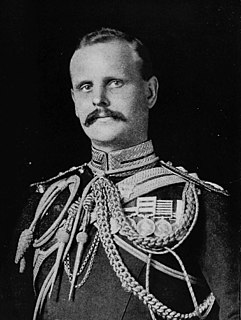 W
WField Marshal William Riddell Birdwood, 1st Baron Birdwood, was a British Army officer. He saw active service in the Second Boer War on the staff of Lord Kitchener. He saw action again in the First World War as Commander of the Australian and New Zealand Army Corps during the Gallipoli Campaign in 1915, leading the landings on the peninsula and then the evacuation later in the year, before becoming commander-in-chief of the Fifth Army on the Western Front during the closing stages of the war. He went on to be general officer commanding the Northern Army in India in 1920 and Commander-in-Chief, India, in 1925.
 W
WLieutenant General Sir George Tom Molesworth Bridges known as Sir Tom Bridges, was a British military officer and the 19th Governor of South Australia.
 W
WLieutenant General Sir Charles James Briggs, was a British Army officer who held high command in World War I.
 W
WLieutenant General Robert George Broadwood, CB was Commander of British Troops in South China.
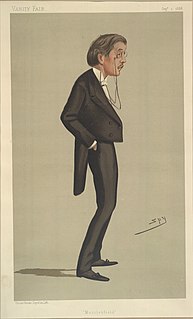 W
WBrigadier-General Sir William Bromley-Davenport, was a British soldier, footballer and Conservative politician. He fought with distinction in both the Second Boer War and the First World War. An MP from 1886 to 1906, he held political office under Arthur Balfour as Financial Secretary to the War Office from 1903 to 1905.
 W
WBrigadier General Charles Bulkeley Bulkeley-Johnson (1867 –1917) was a British and Egyptian Army officer who served in the Mahdist War and the First World War, he was killed in action on 11 April 1917, while commanding the 8th Cavalry Brigade, on the second day of the Battle of Arras.
 W
WField Marshal Julian Hedworth George Byng, 1st Viscount Byng of Vimy, was a British Army officer who served as Governor General of Canada, the 12th since Canadian Confederation.
 W
WGeneral Sir David Graham Muschet "Soarer" Campbell was a cavalry officer of the British Army, amateur sportsman, and later Governor of Malta.
 W
WThis article uses a Belgian surname: his surname is Carton de Wiart, not Wiart
 W
WField Marshal Philip Walhouse Chetwode, 1st Baron Chetwode, 7th Baronet of Oakley, was a senior British Army officer. He saw action during the Second Boer War, during which he was present at the Siege of Ladysmith in December 1899. He saw action again during World War I on the Western Front, taking part in the First Battle of Ypres, and then in the Sinai and Palestine Campaign during which he led his corps at the First Battle of Gaza in March 1917, at the Battle of Beersheba in October 1917 and the Battle of Jerusalem in November 1917.
 W
WGeneral Sir Henry de Beauvoir De Lisle was a British Army General who served in the Second Boer War and World War I.
 W
WField Marshal John Denton Pinkstone French, 1st Earl of Ypres,, known as Sir John French from 1901 to 1916, and as The Viscount French between 1916 and 1922, was a senior British Army officer. Born in Kent to an Anglo-Irish family, he saw brief service as a midshipman in the Royal Navy, before becoming a cavalry officer. He achieved rapid promotion and distinguished himself on the Gordon Relief Expedition. French had a considerable reputation as a womaniser throughout his life, and his career nearly ended when he was cited in the divorce of a brother officer whilst in India in the early 1890s.
 W
WGeneral Sir Hubert de la Poer Gough was a senior officer in the British Army in the First World War. A favourite of the British Commander-in-Chief, Field Marshal Sir Douglas Haig, he experienced a meteoric rise through the ranks during the war and commanded the British Fifth Army from 1916 to 1918.
 W
WField Marshal Douglas Haig, 1st Earl Haig, was a senior officer of the British Army. During the First World War, he commanded the British Expeditionary Force (BEF) on the Western Front from late 1915 until the end of the war. He was commander during the Battle of the Somme, the Battle of Arras, the Third Battle of Ypres (Passchendaele), the German Spring Offensive, and the final Hundred Days Offensive.
 W
WMajor General Sir Henry West Hodgson was an officer of the British Army.
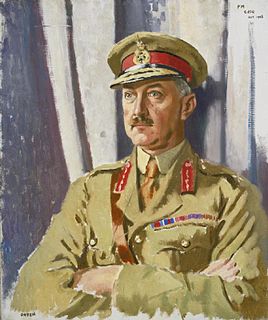 W
WBrigadier-General Sir William Thomas Francis Horwood, was a British Army officer who also served as Commissioner of Police of the Metropolis, head of London's Metropolitan Police, from 1920 to 1928.
 W
WMajor-General Robert Hutchison, 1st Baron Hutchison of Montrose,, was a Scottish soldier and Liberal politician.
 W
WLieutenant General Sir Charles Toler MacMorrough Kavanagh, was a British Army officer who commanded the Cavalry Corps at the Battle of Amiens.
 W
WBrigadier General Paul Aloysius Kenna, VC, DSO was an English-born British Army officer of Irish descent and recipient of the Victoria Cross (VC), the highest and most prestigious award for gallantry in the face of the enemy that could be awarded to British and British Empire forces.
 W
WBrigadier-General John Hardress Lloyd was an Anglo-Irish soldier and polo player. He was awarded a DSO and made a Chevalier of the Légion d’Honneur for his service in the British Army during the First World War. As a polo player he won a silver medal with the Ireland team at the 1908 Summer Olympics.
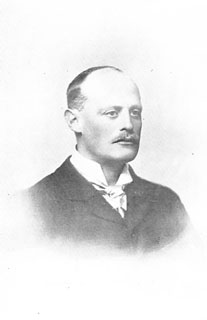 W
WThomas Pakenham, 5th Earl of Longford, KP, MVO, known as Lord Silchester until 1887, was an Irish peer and soldier.
 W
WMajor-General Simon Joseph Fraser, 14th Lord Lovat and 3rd Baron Lovat,, was a leading Roman Catholic aristocrat, landowner, forester, soldier, politician and the 23rd Chief of Clan Fraser. While legally the 14th Lord Lovat, he was referred to as the 16th Lord.
 W
WSir Bryan Thomas Mahon, was an Irish born general of the British Army and senator of the short-lived Senate of Southern Ireland.
 W
WJohn Edward Bernard Seely, 1st Baron Mottistone, was a British Army general and politician. He was a Conservative Member of Parliament (MP) from 1900 to 1904 and a Liberal MP from 1904 to 1922 and from 1923 to 1924. He was Secretary of State for War for the two years prior to the First World War, before being forced to resign as a result of the Curragh Incident. As General Jack Seely, he led one of the last great cavalry charges in history at the Battle of Moreuil Wood on his war horse Warrior in March 1918. Seely was a great friend of Winston Churchill and the only former cabinet minister to go to the front in 1914 and still be there four years later.
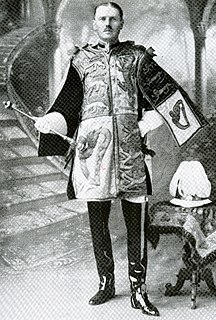 W
WGeneral Sir William Eliot Peyton, was a British Army officer who served as Military Secretary to the British Expeditionary Force from 1916 to 1918. He was also Delhi Herald of Arms Extraordinary at the time of the Delhi Durbar of 1911.
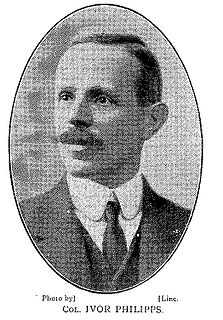 W
WSir Ivor Philipps, was a British officer in the British Indian Army and a Liberal Party politician. He held a seat in the House of Commons from 1906 to 1922.
 W
WRobert Montagu Poore, DSO, CIE was a cricketer and British army officer who, whilst serving in South Africa in 1896, played in three Tests for the South African cricket team. Much of his cricket was played when he held the rank of Major, but he eventually became a Brigadier-General. "Of all the people in the history of the game," wrote Leo Cooper in an introduction to A. A. Thomson's Odd Men In, "he seems to stand for the Eccentric Ideal."
 W
WLieutenant General Sir Michael Frederic Rimington, was a British Army officer who commanded cavalry forces in the Second Boer War and First World War. After early service with the 6th (Inniskilling) Dragoons, "Mike" Rimington was given command of an irregular cavalry force in South Africa, known as "Rimington's Guides". He commanded them for a year before taking command of his regular regiment, and later a cavalry brigade. In 1914, with the outbreak of the First World War, he commanded the 1st Indian Cavalry Division and then the Indian Cavalry Corps on the Western Front, before retiring to home-service duties in 1916. He had one son, Reginald, who followed his father into the 6th Dragoons; he rose to command an armoured brigade in 1941, and was killed in North Africa.
 W
WField Marshal Sir William Robert Robertson, 1st Baronet, was a British Army officer who served as Chief of the Imperial General Staff (CIGS) – the professional head of the British Army – from 1916 to 1918 during the First World War. As CIGS he was committed to a Western Front strategy focusing on Germany and was against what he saw as peripheral operations on other fronts. While CIGS, Robertson had increasingly poor relations with David Lloyd George, Secretary of State for War and then Prime Minister, and threatened resignation at Lloyd George's attempt to subordinate the British forces to the French Commander-in-Chief, Robert Nivelle. In 1917 Robertson supported the continuation of the Third Battle of Ypres, at odds with Lloyd George's view that Britain's war effort ought to be focused on the other theatres until the arrival of sufficient US troops on the Western Front.
 W
WAnthony Ashley-Cooper, 9th Earl of Shaftesbury, was the son of the 8th Earl of Shaftesbury and Lady Harriet Augusta Anna Seymourina Chichester, the daughter of the 3rd Marquess of Donegall and Lady Harriet Anne Butler.
 W
WMajor General Sir Nevill Maskelyne Smyth, was a senior officer in the British Army and a recipient of the Victoria Cross, the highest award for gallantry in the face of the enemy that can be awarded to British and Commonwealth forces.
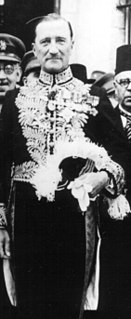 W
WMajor-General Sir Edward Louis Spears, 1st Baronet, was a British Army officer and Member of Parliament noted for his role as a liaison officer between British and French forces in two world wars. Spears was a retired Brigadier General of the British Army, and served as a Member of the British House of Commons. From 1917 to 1920 he was head of the British Military Mission in Paris.
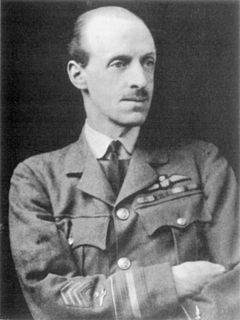 W
WAir Vice Marshal Sir Frederick Hugh Sykes, was a British military officer and politician.
 W
WBrigadier General Frank Wormald, CB, was a soldier in the British Army. He served in the Second Boer War and the First World War where he held the command of the 5th Cavalry Brigade.